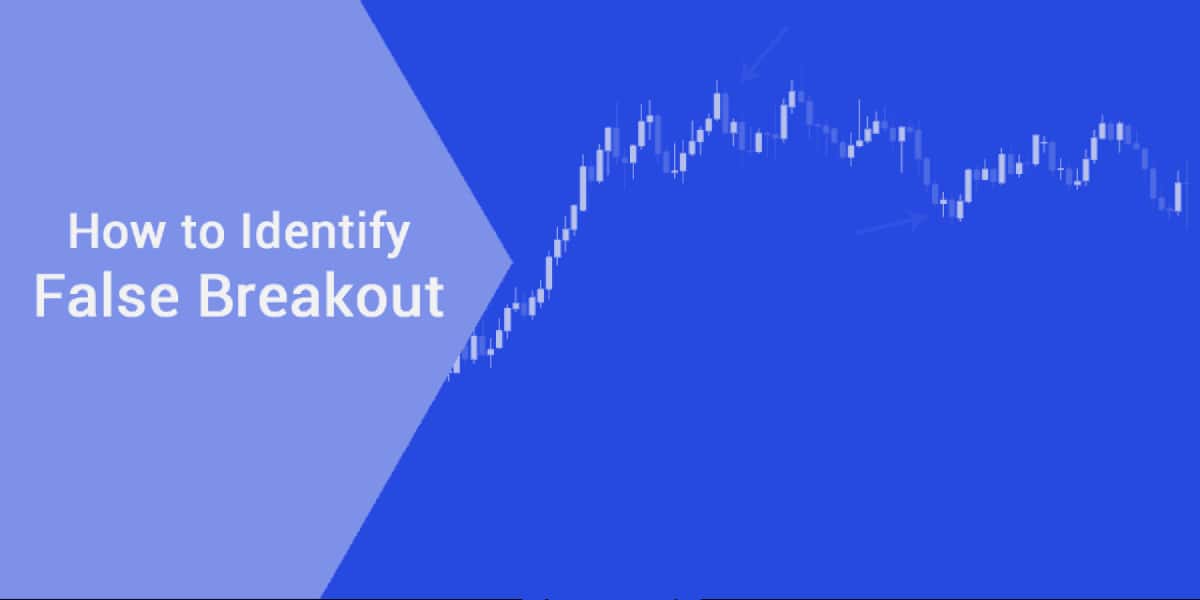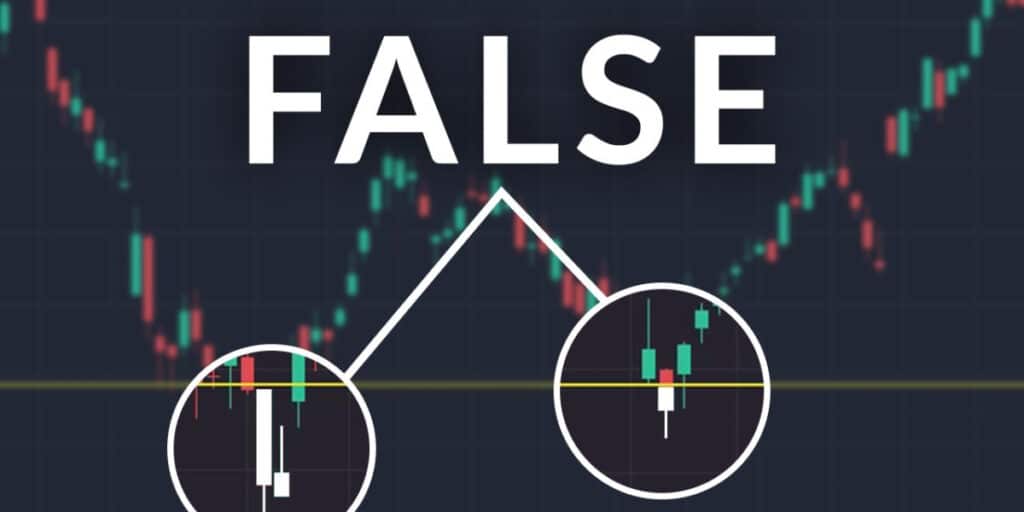
How to identify false breakouts in Forex?
In trading, there are two kinds of signals. The right quality signals will make you earn money in trading, And the bad signals, such as false breakout, will make you lose money. These false signals can make you lose a lot of money if you do not anticipate them in your trading strategy. So be careful. In this article, we will show you how to identify and avoid false breakout signals in Forex trading so that you can position yourself more confidently.
How to identify false breakout signals in Forex?
A false breakout happens when an asset price trespasses a certain level of resistance and support. Also, it doesn’t have sufficient momentum to keep direction. Some traders want to take a position once a breakout takes place. They choose to end trades if the breakout signal fails.
A false breakout signals investors to open a trade of the breakout in the opposite direction. When the breakout fails, the asset price can go in reverse.
A false breakout is also known as a failed break.
What impacts false breakouts?

False breakout signals are more present in the short term than in the long term because, at this level, the markets are more easily manipulated. A technical pattern or a candlestick pattern has much more weight on a chart every month than on a daily basis. And this importance of figures and configurations decreases as one descends in the units of time.
A false signal can be voluntarily provoked: the more popular a market, the more likely it is that a scenario will occur during a signal since most participants in the market will validate this scenario. However, the majority of traders have no real price impact. It is, therefore, easy for market-makers to trap these small investors. The goal of a false signal is, therefore, for them to trap as many people as possible, then force a reverse movement that will blow up the Stop Losses, triggering a panic movement that will satisfy their interests. We should not cry conspiracy, however, because while some signals are triggered on purpose, many are involuntary false signals, often caused by the volatility of the markets themselves.
False signals are an integral part of the markets. These can be caused voluntarily or involuntarily. It is obviously impossible to avoid them all, but solutions exist to avoid certain pitfalls. In the following lines, you will see various tricks that can easily be put in place and which we hope will save you from loss and frustration.
How to avoid false breakout signals?
False breakout signals are an integral part of the market. And we, small investors that we are, do not have the necessary leverage to move the market. We can only ride the wave. What solutions are there to avoid being stranded on the beach?
Extend Stop Loss
False signals appear in obvious areas of the market. Supports, resistances, trend lines, or technical figures are clearly visible to all. If market-makers trigger the false signal, they know where most people will place their Stop Loss. To avoid being caught in the crowd, you must therefore avoid placing your stops at levels that are too obvious and move them a little further away. In the example above, a trader who would have played the rebound on the resistance by putting stop loss slightly above it will be excited when his scenario was the right one. A lower stop loss would have allowed him to make gains and saved him some frustration.
Integrate false breakout signals into your strategy
It is also possible to resign yourself, false signals are part of the market, but this does not prevent you from opening a position each time, even if it is a loser. Good money management and a little self-control can be enough to deal with false signals. If, in the end, your strategy is profitable and it suits you, it is not necessarily mandatory to change it. After all, you can’t win every time, and false signals are losses like any other.
Technical indicators
Some indicators make it possible to filter out certain false signals. The RSI, the MACD, and the stochastic, … can validate that a trend line breakout is not a false signal by indicating a divergence.
Be patient
Sometimes, when in doubt, the best thing is to wait and see. What does this mean concretely on the market? Generally, when breaking out of an important zone, we will wait for a pull-back to open a position. This avoids being trapped if the first movement was a false signal. The problem with this solution is that there is not necessarily a pull-back following a breakout. We, therefore, risk missing out on good moves and therefore gains.
Avoid false breakout signals to have a high success rate.

First, you should look at your percentage of success but at your final profitability. Do not give up on your trading strategy because of false signals.
Signals are the most important elements in your trading plan. They can be found and occur more or less frequently depending on your trading strategy and your tools. If you find your trading signals through functions (stochastic, rsi, Ichimoku) and tools (Fibonacci retracements, trend lines), you work based on technical analysis.
On the other hand, if you wait for your signals in the economic announcements of Forex or the results of this or that company, you work according to the fundamental analysis.
The first thing you ought to understand is that trading is divided into sessions. So if you work on fundamental analysis, you will have to consider this aspect of schedules, seasons, sessions, etc.
However, we still recommend technical analysis. Indeed, you will be a little more comfortable because the buy or sell signals will be detected by the tools you have chosen. In addition, you will be able to create your own strategy to manage and identify good and bad trading signals.
Thanks to technical analysis, the consensus (investors’ opinion) will always end up in the currency’s price at a given time. Don’t use data other than price, so false trading signals can only intervene according to your technical analyses.
Avoid false breakout signals to have a high success rate.
This approach is intended for beginners. Indeed, many people are certain that the success rate impacts the profitability and the quality of the trader. But it’s wrong! We will prove it to you with a fairly simple, albeit extreme, example.
Trader 1 95% success, with an average gain per trade of €50 and an average loss per trade of €950
Trader 2: 30% success, with an average gain per trade of €50 and an average loss per trade of €10
Out of 100 trades, here is the result:
Trader 1: (95X50) – (5X950) = 0€ while winning 95% of the time
Trader 2: (30X50) – (70X10) = €800 when he is wrong two times out of three.
Of course, we chose an extreme example. But it is so that you remember that the percentage of success is not a selection criterion during your strategies.
Do not give up on your trading strategy because of false signals.

What is important is that you have confidence in yourself and your strategy. If you do not have any strategy, check out my training offered. I will give you some tips to get ahead in trading, even with false signals.
In trading, there are many biases that prevent you from moving forward or believing in your strategy. If you make a trading plan but change it every other day due to false trading signals, this is not the solution.
False signals in trading occur when you see multiple setups that should work but they don’t. So you think the problem is not with false signals but with your trading strategy. However, this is not necessarily the case.
The most important thing is to test your signals on a long series of trades without modifying the slightest parameter of your trading strategy. Never change anything, it’s important. If you change your settings each time; you will not be able to judge the real performance of your trading plan.
To do your tests and try out your strategies, I advise you to create a demo account. Thus, you will be able to make your mistakes, your settings etc. Without losing a penny. Test for the short, medium and long term. If you don’t want to waste your time creating a strategy to avoid false signals, I’ll give you a shortcut at the end of the article.
Bottom line
Many traders are afraid to take positions when the price is in range, especially when approaching the extreme levels of the range, because they simply fear being caught in a false breakout (a false breakout). This fear is understandable. No one likes to see their trade move in the right direction of the market before turning around and ending up losing.
You must therefore learn to minimize this possibility, and here we will show you how to do it. There is no absolute way to avoid false breakouts. From time to time, they are unavoidable, but if you apply these few rules above, then you will certainly minimize the risk of being caught in this kind of trap.
The idea is, in fact, very simple, all you have to do is take advantage of the state of the market and its dynamics and take a position only in the direction of the underlying trend of the latter following a breakout “confirmed” by a return rejection of the price in the range. When the market is bullish, then you will only take up breakouts. Conversely, when it is bearish, you will take bearish breakouts. It’s as simple as that.




